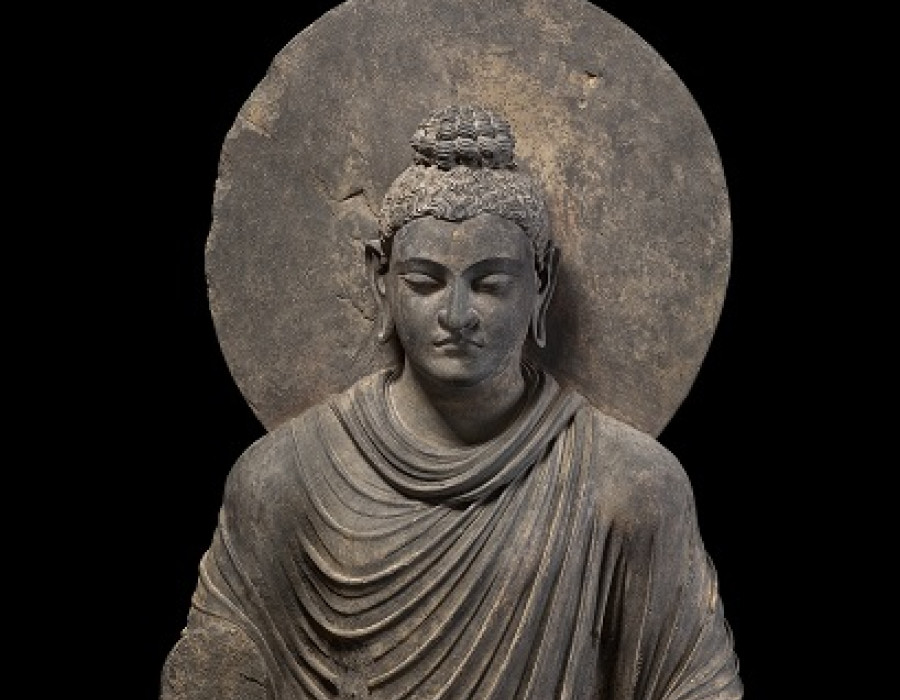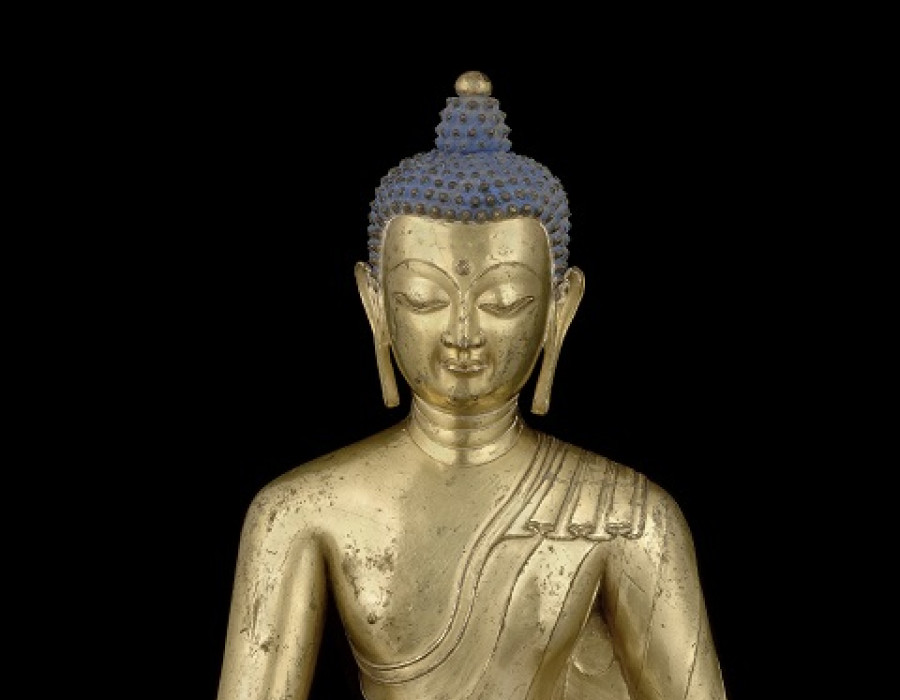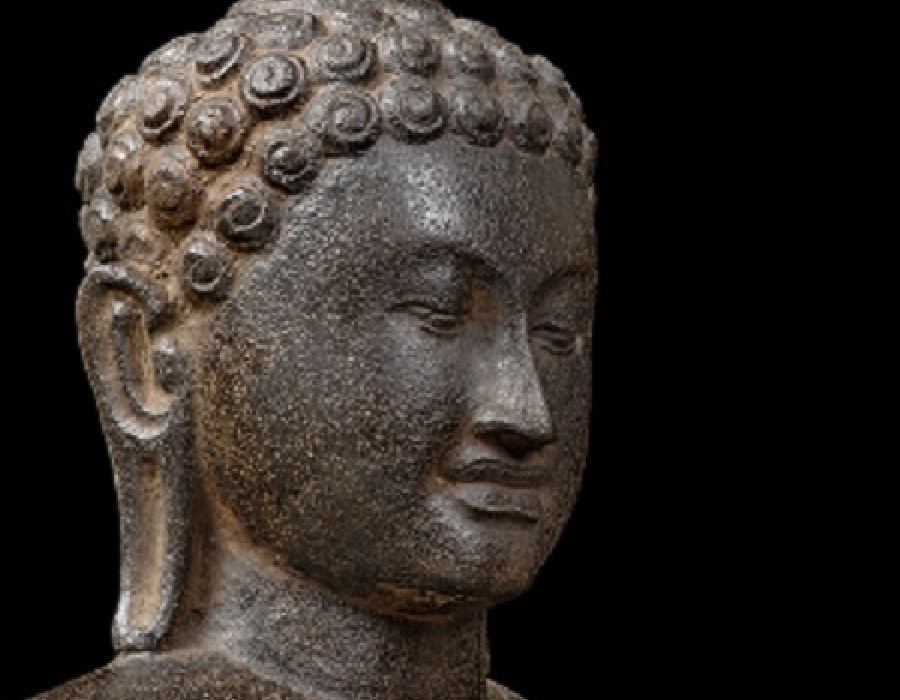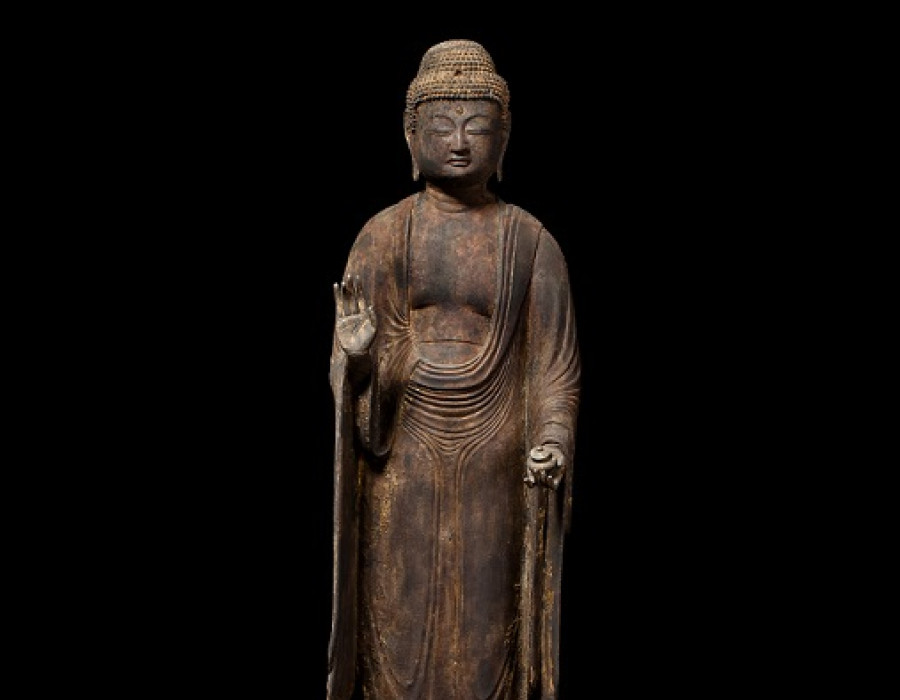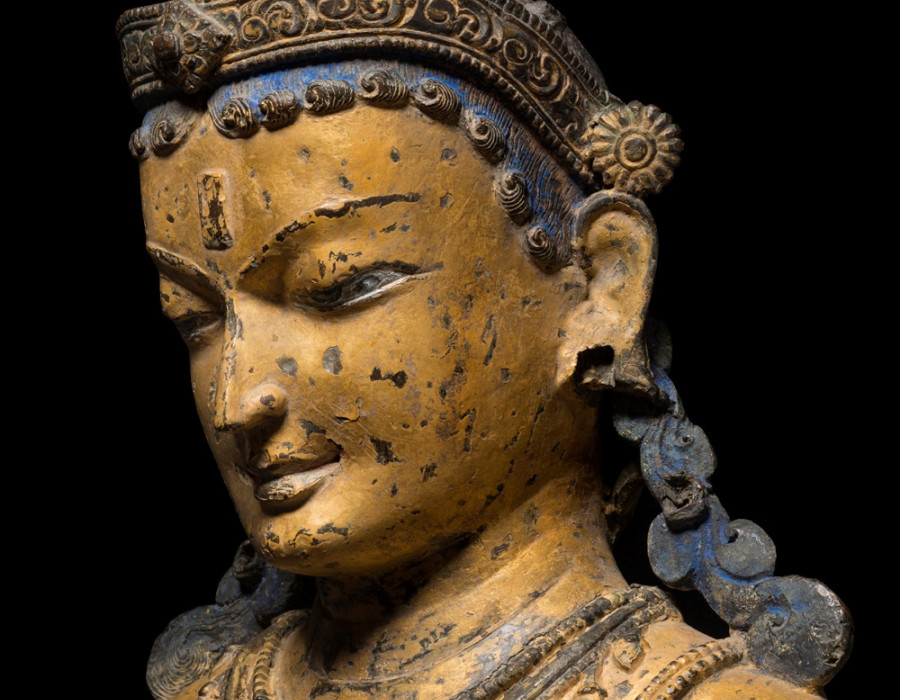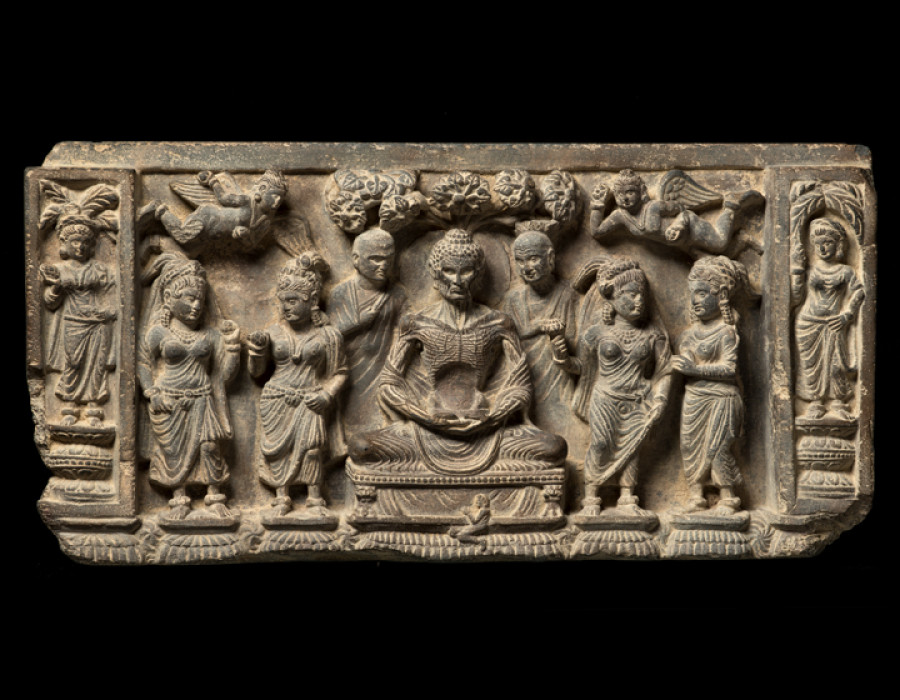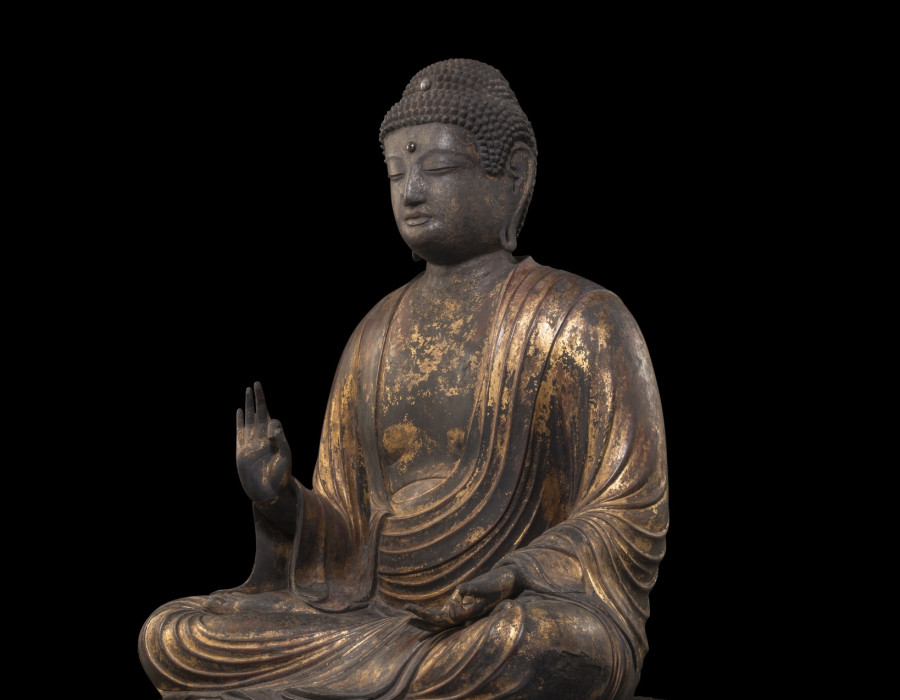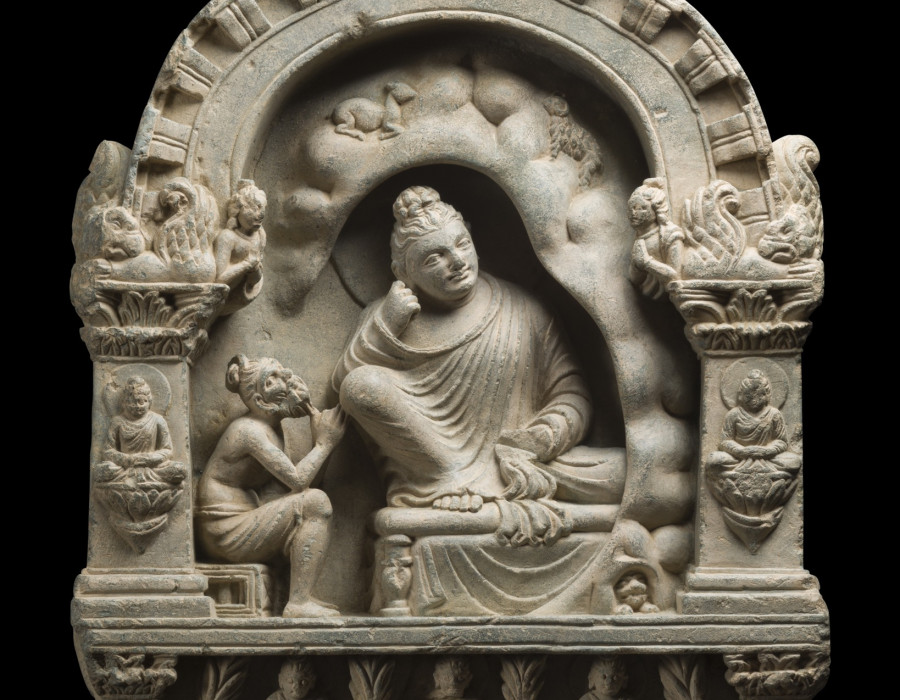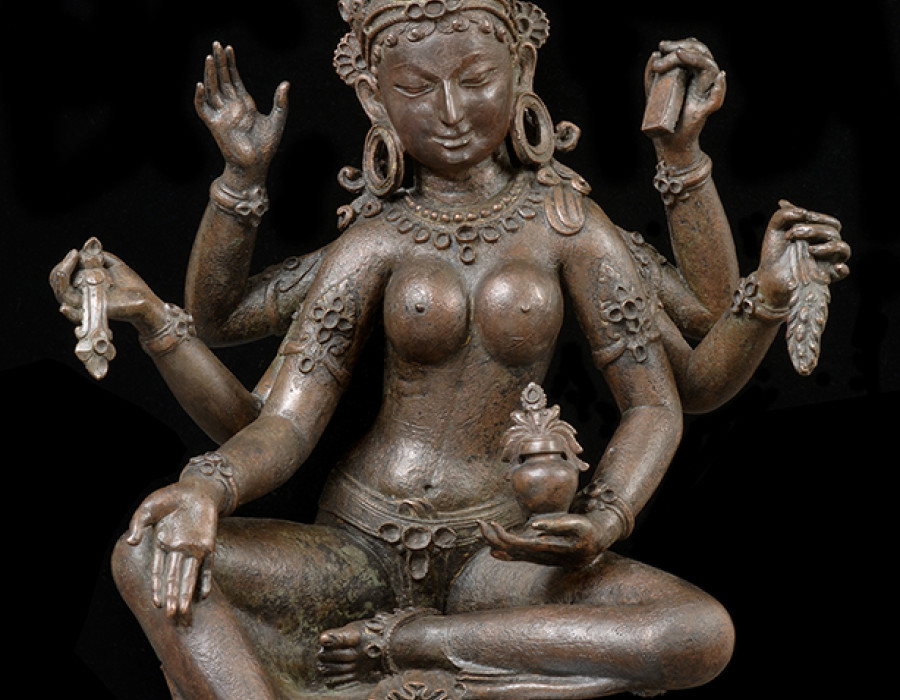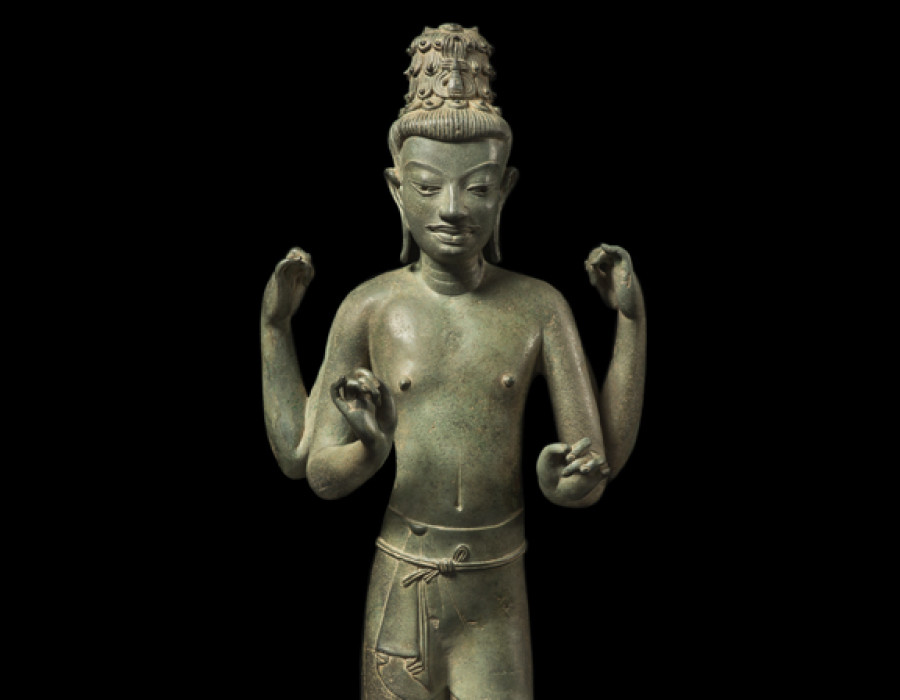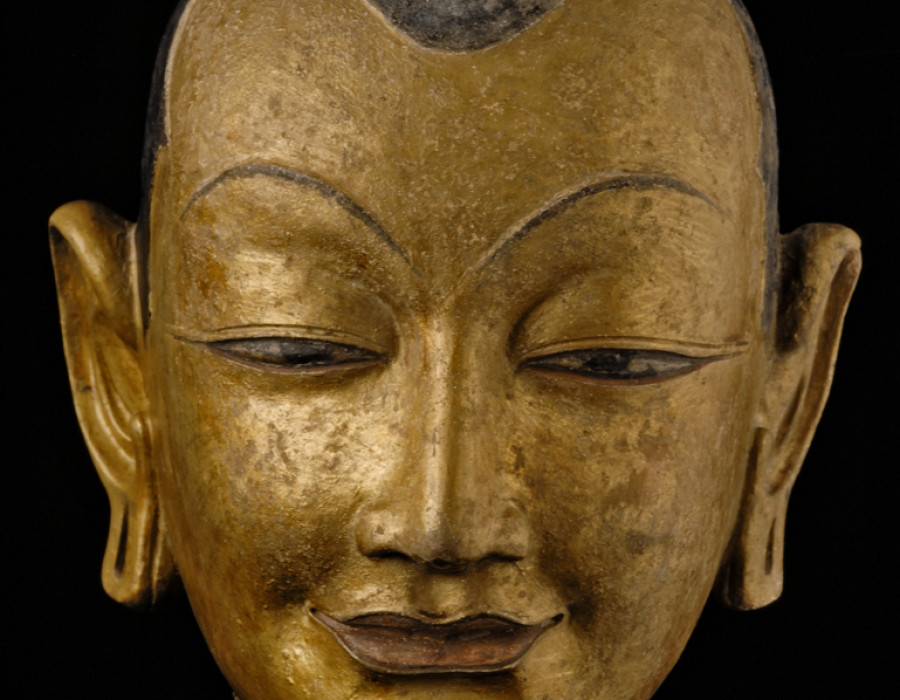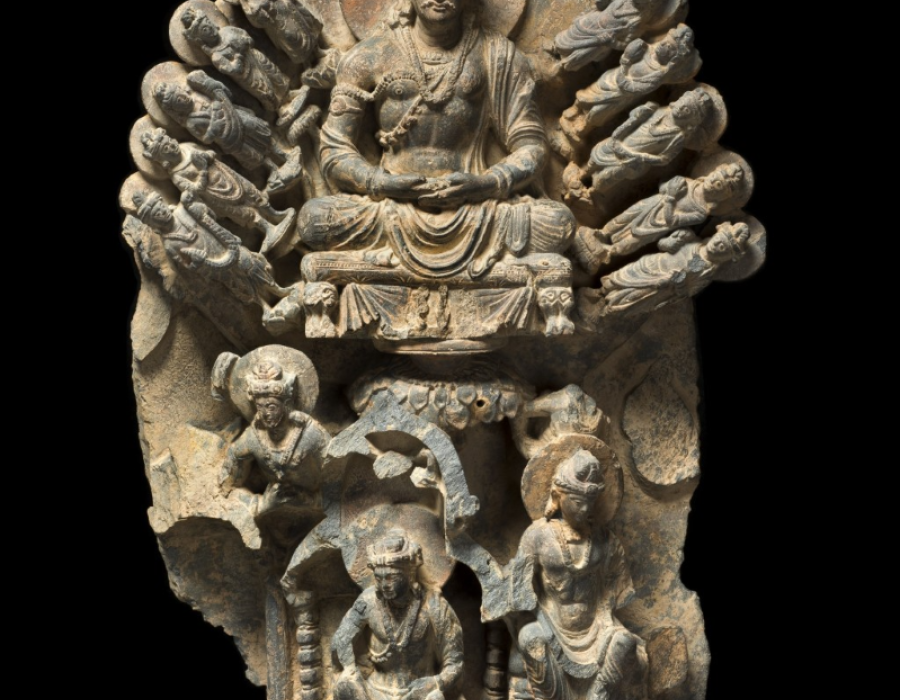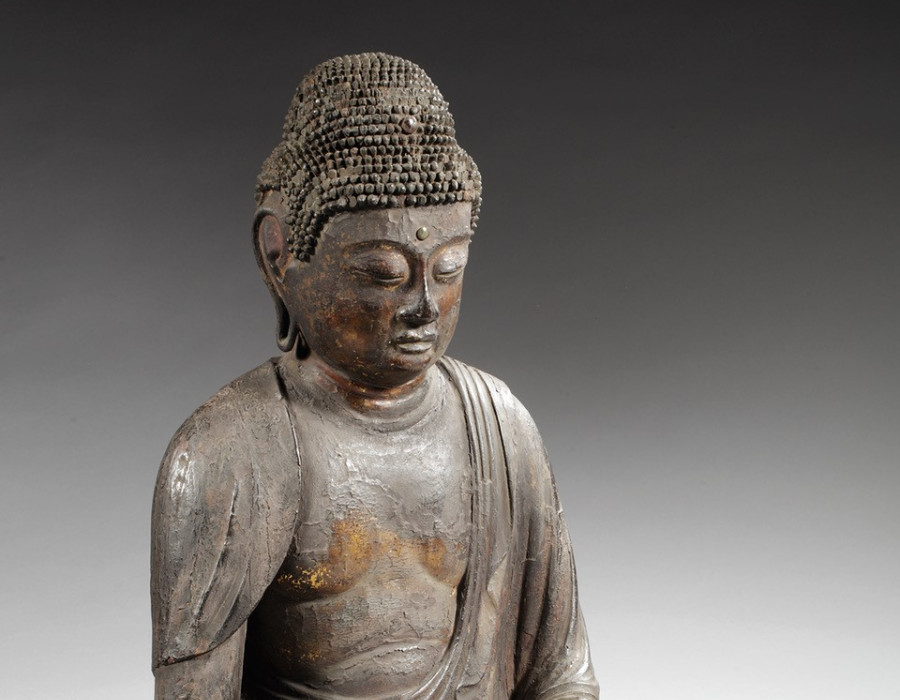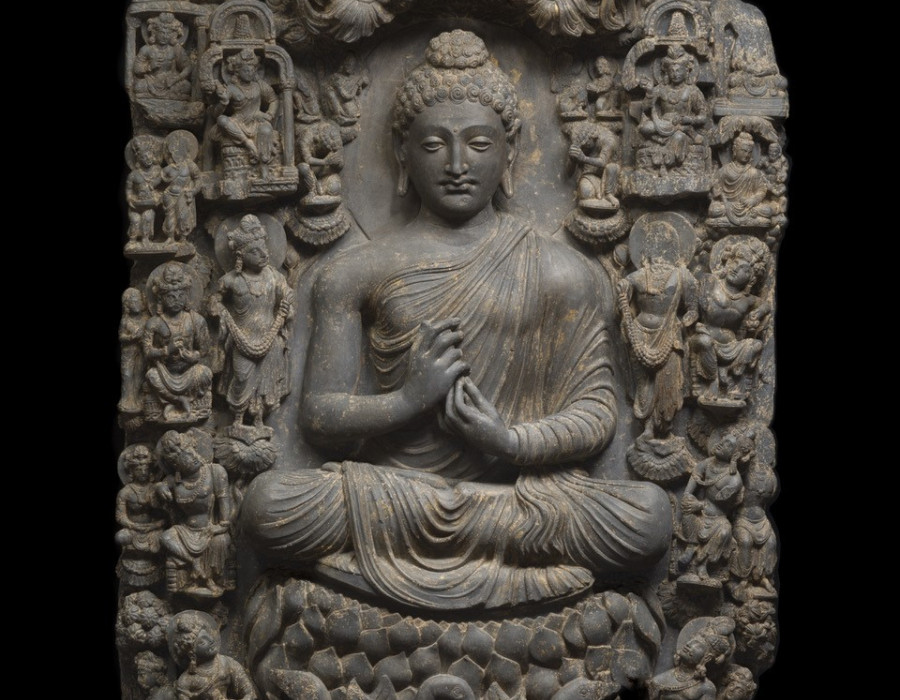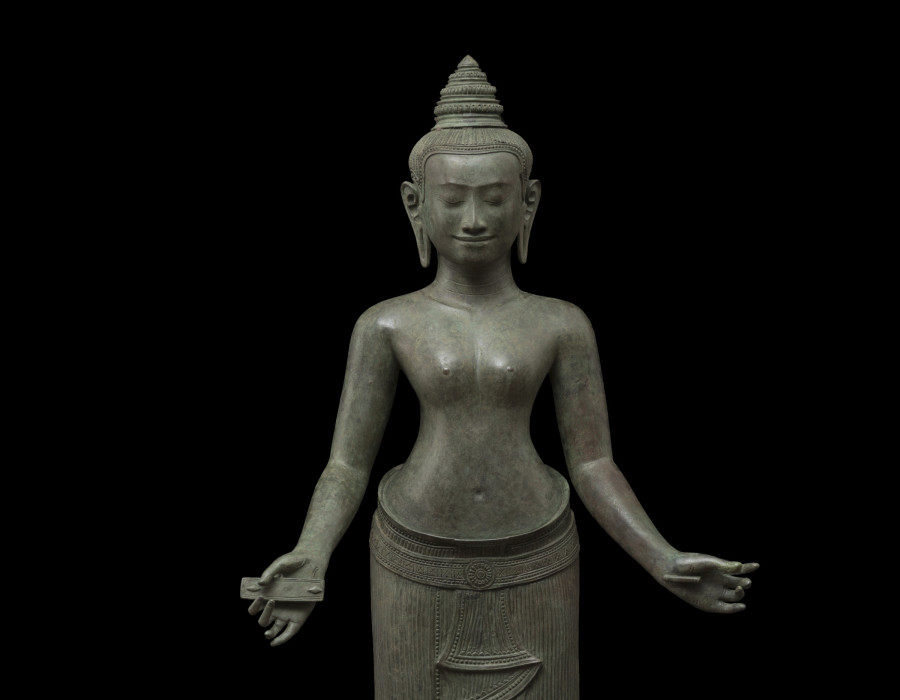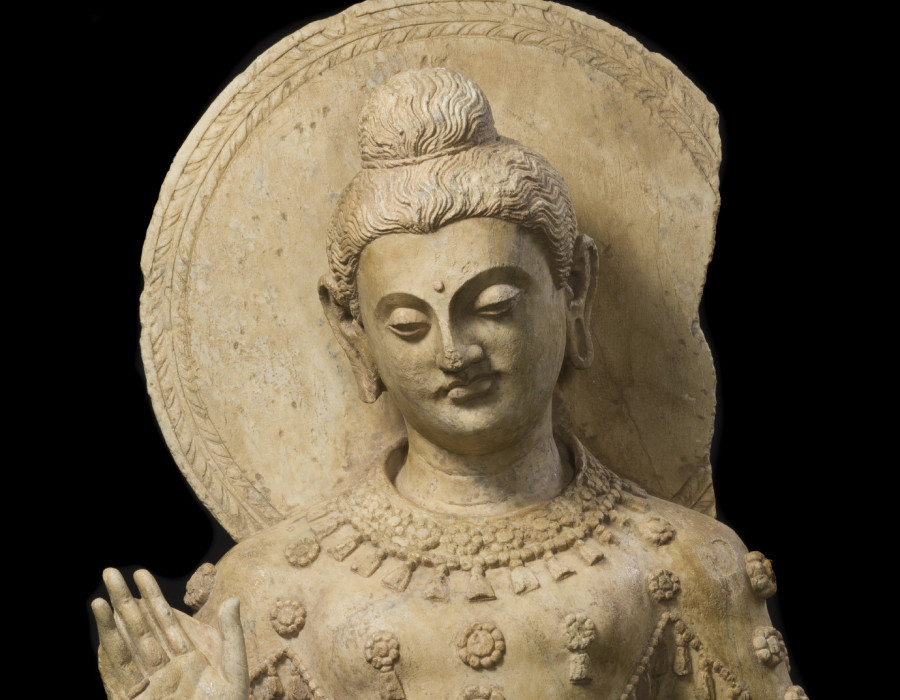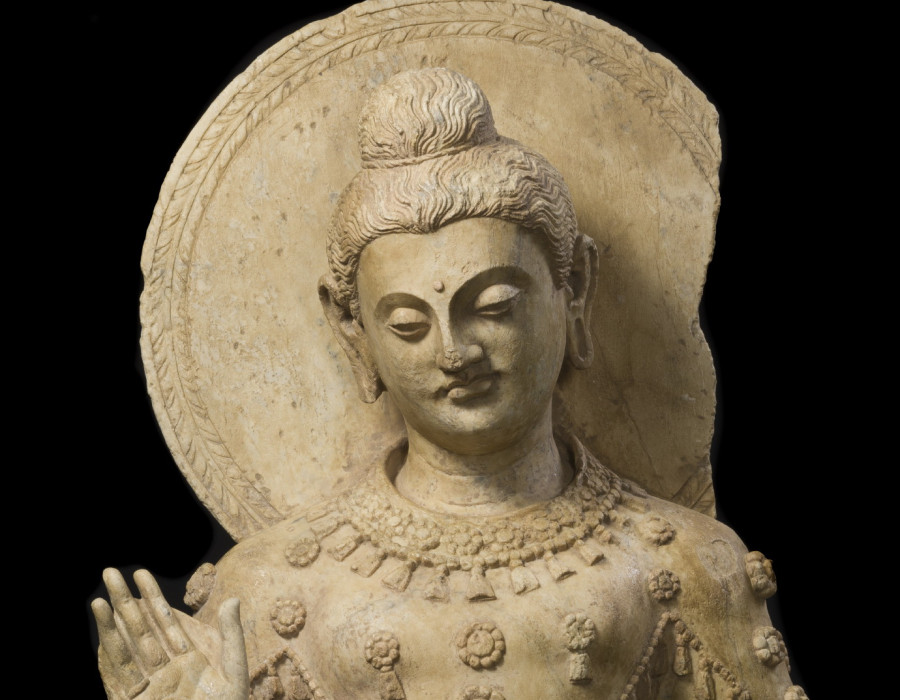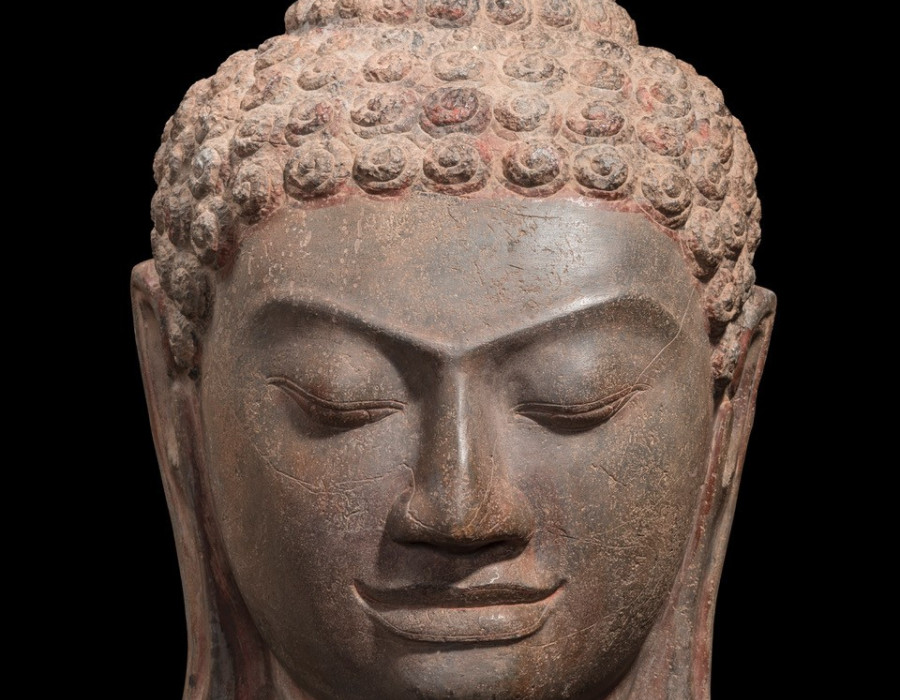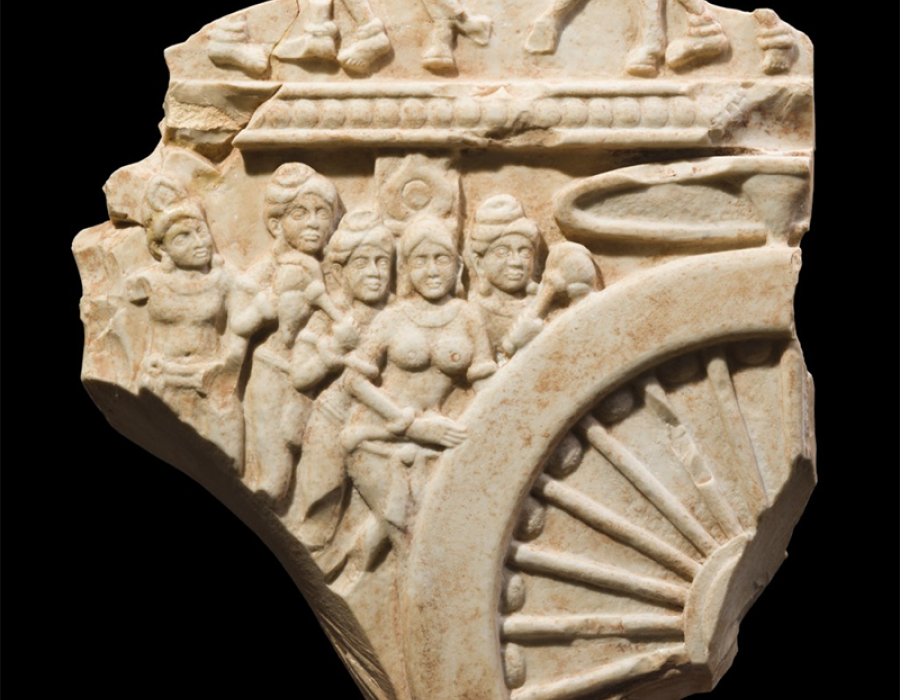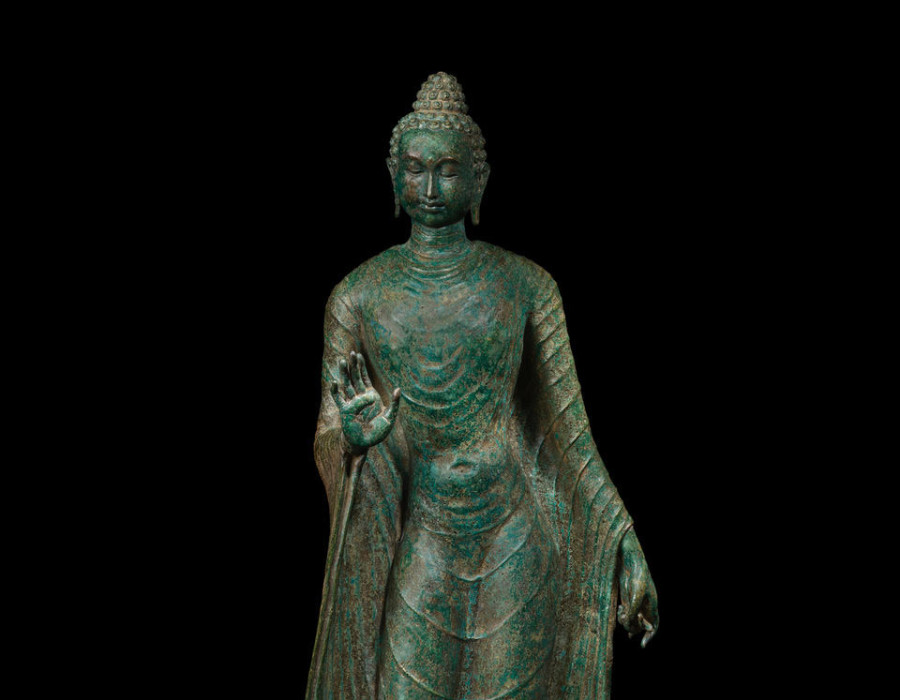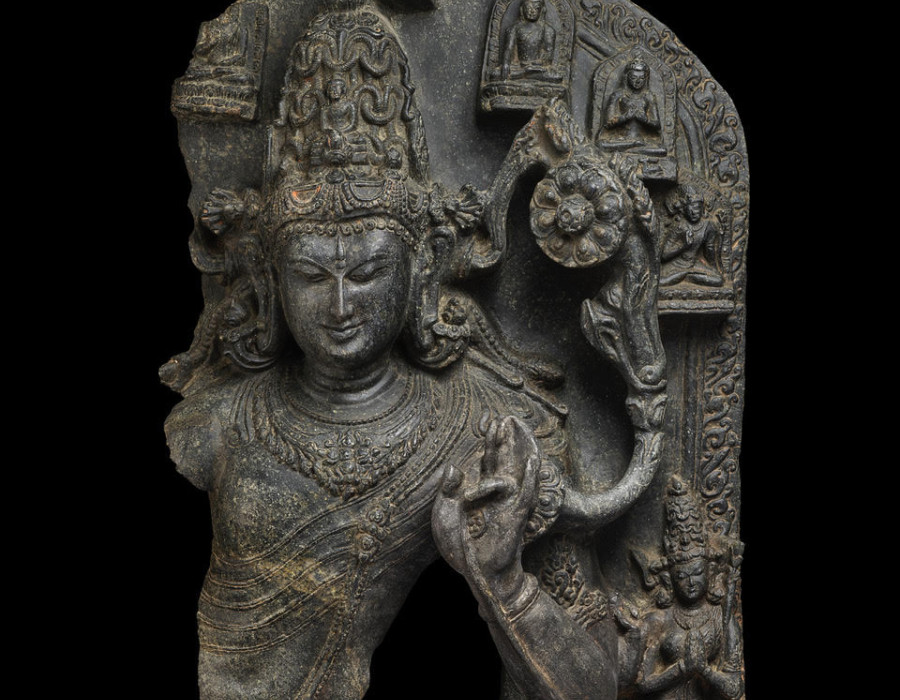
Martin Goodson
Images of Truth: Yakushi Nyorai
(Medicine Buddha) Japan 12th Century
The Buddha is called the Great Physician and his teachings medicine for body and mind. These Buddhas dispense medicine to alleviate the 'dis-ease' of the human condition.

Yakushi Nyorai
Yakushi Nyorai
Japan
Late Heian (Fujiwara) period, first half 12th century
Wood with remnants of original linen (hemp), gesso, lacquer and gilt
Height 133 cm excluding base; 160 cm including base
Yakushi Nyorai, the Medicine Buddha, carries the small vase in his left hand by which he is easily identified. The left hand also displays varadamudra (granting of requests) and he displays abhayamudra (reassurance) with his right hand. Yakushi is Lord of the Eastern Paradise (Vaiduryanirbhasa, the Pure Lapis Lazuli Land) where he is attended by two bosatsu (bodhisattvas) named Suryaprabha and Chandraprabha, who represent the sun and moon respectively and guard the truth of his teaching. This graceful yet authoritative figure of Yakushi dates from the final years of the Late Heian period, when the Fujiwara clan effectively ruled Japan. An elegant courtly culture prevailed at Kyoto, but within the provinces, rival martial factions were emerging that by the mid-12th century would oppose and eventually overcome the Fujiwara; in the meantime, under their patronage and reflecting their isolation from mainland Asiatic culture, a truly Japanese sensitivity emerged. Images such as this were created for peaceful, elegant temples in idealised landscape settings. This image perfectly illustrates the fine balance between realism and idealism revealed by master sculptors who understood the terrestrial and divine aspects of the image through their own devotion to the Buddhist faith.

Yakushi Nyorai (Portrait)
After his Enlightenment the first teaching of the Buddha consisted of the Middle Way between the extremes and the Four Noble Truths. This latter teaching is the newly Awakened One’s diagnosis of the human sickness summed up in his saying “Suffering I teach, and the way out of suffering.”
The First Noble Truth is called ‘dukkha’ in both Pali and Sanskrit and is often just translated as ‘suffering’. However it is a subtle term that has no direct translation into English. It carries a meaning of being unsatisfied, being unfulfilled – a sense of lack or that something is missing; as well as referring to physical or emotional pain.
The Buddha stated that this feeling of a lack lies at the heart of the conception of myself. This apparent ‘lack’ gives rise to the desire to become fulfilled and thus ‘I’ endlessly search for one thing after another to fill the void.
This sense of a void is created because I see myself as being cut off from everything else; this is the meaning of ‘self’ to be self-contained and separate from everything else. The Buddha also said this apparent sense of self and the feeling of separateness (alienation) is a deluded way of seeing.
Although this ‘self’ is unreal the delusion is not and neither is the desire that it gives rise to.
The stronger the feeling of dukkha or ‘lack’; the stronger the desire to be fulfilled. Thus the heart searches here and there for something to satisfy and stem this craving.
The Third Noble Truth simply states that with the cessation of attachment to this notion of ‘myself’ comes a simultaneous cessation to the feeling of the lack which ‘self’ creates.
The Fourth Noble Truth gives the practical steps which lead to the erosion of the delusion of a separate self; otherwise known as The Noble Eightfold Path.
The stronger the attachment to ‘I’ the stronger the craving to be fulfilled. The stronger the craving; the more ‘I’ am frightened of not getting what I want.
When we look at the medicine Buddha we see the Buddha dispensing the medicine needed with his left hand; he is giving – a form of letting-go. The right hand gives reassurance to the fearful and is therefore the sign of fearlessness.
These are the two things that no ‘I’ can do because they only arise in a heart that has completely let-go of any notion of a split-off ‘I’. Instead what is there is a heart that feels completely at one with all beings. A heart that craves and is fearful of not getting ‘my’ own way cannot truly feel warmth and compassion. A heart that can freely give of itself and is fearless is not just giving medicine – it is itself the medicine.
Images of Truth
Buddhist art and iconography

